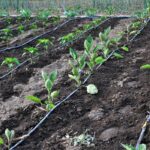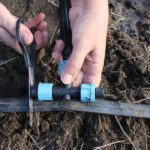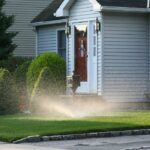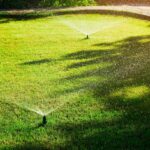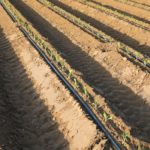Most plant problems stem from overwatering or underwatering. This problem is further aggravated by gardeners who tend to operate their drip irrigation systems like a sprinkler. So, what’s the verdict? How long should you water your plants with a drip irrigation system?
How long you should water your plants depends on the width of your plant roots, the flow rate of the drip tube, and the texture of your soil. It’s also essential to take into account the amount of rainfall your land receives. Make sure that the water reaches at least 8 inches under the soil.
It’s crucial to run your drip irrigation cycles for the correct amount of time. Doing so will ensure that water penetrates deeper into the soil and is available to roots for longer. Let’s look at how long you should run your drip irrigation systems as well as when should you replace them.
How Does a Drip Irrigation System Operate?

Drip irrigation is an economical and efficient way to water your plants and trees. This method of irrigation is most commonly used in drier areas, as it reduces evaporation and runoff. It’s not only used in farm operations and commercial nurseries, but is also becoming quite popular among homeowners.
In drip irrigation, tubes are placed on the ground alongside the plants. These tubes are fitted with evenly spaced emitters that drip water slowly and directly into the soil at the plant root zone. This ensures that moisture levels in the soil are at an optimal level, which enhances plant productivity and quality.
How Long Can You Leave Drip Irrigation Running?
In a drip irrigation system (on Amazon), water drips out much more slowly than with a sprinkler system. The water output in a drip irrigation system is usually one or two gallons per hour, whereas in a sprinkler system it’s one or two gallons per minute.
A one gallon-per-hour drip emitter will typically put out 10 ounces of water in five minutes, which comes to almost a cupful. This small amount of water isn’t enough to completely saturate the roots of the plant. It won’t penetrate more than a couple of inches and won’t stay there for long.
When running a drip irrigation system, you need to think in hours, not minutes, to ensure deep penetration of water. Also, you don’t need to run the system every day; twice a week will be enough.
Be sure to apply enough water so that it reaches at least 8 inches or more under the soil. You can check if the soil is adequately moist with the help of a moisture meter (on Amazon).
Another thing that could prevent proper watering of trees is not having enough emitters. Placing one emitter for a shrub or tree isn’t enough, as the roots of a plant typically grow out horizontally.
It’s crucial to place the emitters at even intervals around the tree in a circle to ensure that it gets enough water. Remember to add additional emitters as the plant grows.
What Happens if You Overwater Your Plants?
Overwatering is a common cause of plant problems. Soils that are poorly or heavily drained are more in danger of becoming waterlogged. Roots growing in waterlogged soil typically die since they’re unable to absorb the oxygen they need for normal functioning.
Plants will suffer greater root damage the longer they are deprived of air. The dying roots will start to decay. As a result, the plant won’t be able to receive water and nutrients. It’ll become stressed and more susceptible to certain fungal pathogens.
For instance, a mold called Phytophthora spp. can cause root rot in plants growing in waterlogged soils. The damage to plants caused by overwatering is usually misdiagnosed as pest damage. However, roots damaged by pests don’t concentrate near the soil’s surface.
Overwatering causes a lack of oxygen in plants, which leads to loss of vigor in plants and death of roots. The primary symptom of overwatering in plants is stunted growth with yellowing leaves. They may also experience leaf burn or leaf scorch.
You may also find water-soaked blisters and spots on the plant’s leaves and stem. The plant’s crown may rot. Rot-causing soil organisms may attack the damaged roots, causing the plant to die of root rot.
How to Avoid Underwatering Your Plants
Underwatering, as is evident from the word, is when plants don’t get enough water. It causes the roots to grow very near to the surface, where they’re in danger of drying out quickly. When underwatered, plants are more likely to fall victim to diseases and insect invasions.
Some common symptoms of underwatering in plants include dry soil and wilting and droopy leaves. You can take the following steps to protect your plant from underwatering:
- Avoid exposing your plant to extremely arid or warm conditions.
- Be sure to water your plant frequently and properly.
- Your soil and potting mix may be too well-draining. Try replacing it with a different soil mix that’s more suitable for your plant.
How Often Does Drip Irrigation Need to Be Replaced?
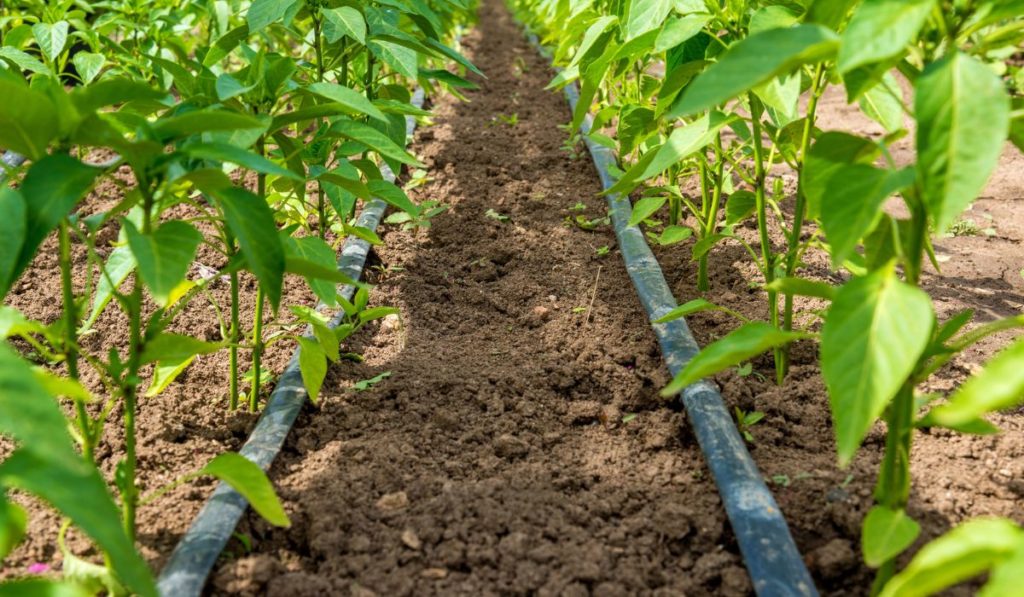
Typically, a subsurface drip irrigation system, if well-maintained, can last for almost 15 years. However, you may need to replace or repair some of the system’s components over the years. For instance, drip irrigation tubing can become degraded when exposed to UV light.
In most cases, drip tubing buried under the ground can last for almost a decade, but the tubing placed on the ground won’t last for 10 years due to several reasons like an increased risk of freezing and exposure to UV light.
Different types of emitters have various lifespans. Flag emitters (on Amazon) can become clogged frequently due to mineralization, but they can be flushed. Button emitters (on Amazon), on the other hand, don’t clog much, but need to be replaced when they do.
Another factor that can cause drip line and emitter failure is damage from rabbits, pack rats, ground squirrels, humans, and dogs. However, you can increase the lifespan of a drip irrigation system with regular maintenance.

